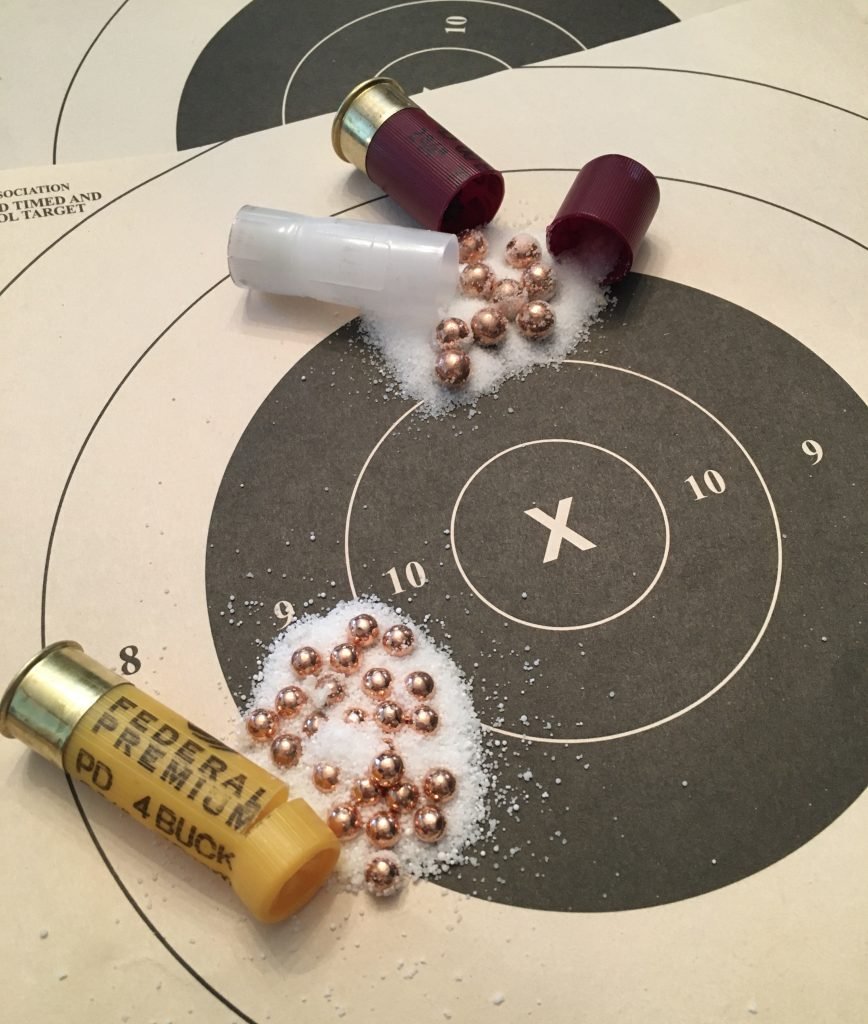Let’s talk about how we pick a shotgun intended for home defense. Really, this is a matter of mission driving the gear train. What we need in a shotgun for defensive use is a bit different than what we need in a shotgun used for duck hunting, chasing down turkeys in the woods, or busting clays on the weekends with our buddies.
Reliability
First and foremost, we have to have as much reliability as we can possibly get. That limits our options a bit and points us towards the more expensive models, like Mossberg 590s, Remington 870Ps or Wingmasters, and in the semi-auto world, Beretta’s and Benelli’s. If we need to shop on a budget, the place to find deals are on Law Enforcement trade in guns.
Just recently, I have seen older 870 Wingmasters with 18.5″ rifle sighted barrels and Surefire fore-ends for less than three Benjamins. That is a heck of a deal, and beats the pants off a $180 China made scatter gat. If all our budget can manage is the $180 shotgun from China, though, it is still probably going to work better than most other $180 firearms out there.
Length
The next consideration is going to be length—both length out the front of the gun, and length out the back. Too much barrel length and the gun can get pretty hard to maneuver. I prefer an 18.5″ barrel. If you want to go shorter, it requires paperwork, an extra $200, and a healthy dose of patience. The only exception to that being the new 12 gauge “firearms” that are available. Those are a different story altogether, though. The other common barrel length is 20″, especially on Mossbergs. Even though it is just an inch and a half, there is a world of difference between 18.5″ and 20″ for some reason. In a pinch, longer will work, but 18.5″ or 20″ will do better.
The other length measurement we are concerned about is the stock length. Most shotguns come with a 14″ length of the pull. This is the distance between the butt of the gun and the face of the trigger. For usual shotgun applications, that is okay. For what we are trying to do, it is a bit too long. Even for me, at 6′ 4″ tall, I like a 13″ length of pull. Youth stocked guns are useful in this application, but hard to find on the gun we want sometimes. There are a few aftermarket options for shorter stocks. The most popular probably being the Magpul SGA stocks that have an adjustable LOP. If you want to just go to a 12.5″ LOP, the Hogue stocks are also good, in my opinion. The third option for the handy type out there is to shorten a wood stock to the desired length. It will require fitting a new recoil pad also. As long as you are careful, though, it isn’t that hard. If I can pull it off, anyone can.
Sighting System
Once we have our length sorted, we want to give some thought to sights. Despite what many people seem to think, at inside the home distances, shotguns still have to be aimed. They don’t shoot a cone of death, especially not at 7-ish yards. There are some options in between these, and different versions of each, that will bring a little something different to the table. This is just a general breakdown.
Bead sights are the most common, and they can be run pretty well with practice. Where they lack is with visibility in poor lighting conditions, like a dark house. They also are not adjustable, so if they shoot a little high, low, or left, or right, good luck. It is what it is. The load has to be matched to the sights instead of the sights matched to the load.

Pretty common on “tactical” shotguns are ghost ring sights. They offer a little more precision at the cost of some speed. They can also come with high visibility inserts, like tritium, to help with shooting in less than ideal lighting conditions. The really nice thing is that usually, they are adjustable for windage and elevation. This means we get to pick our loads based on criteria other than whether or not it shoots to our sights.
Rifle sights are next. They offer the most precision and are also adjustable. Because of the more refined sight picture, though, they can sometimes be a bit slower if the shooter doesn’t understand how to stretch what the sight can do.
Gauge
Lastly, we have to consider the gauge of the shotgun to be used. The usual default is 12 gauge. It is the most common in the configuration we are looking for. The second place is 20 gauge. While the options are fewer, they are out there. The usual logic behind going 20 gauge is lower recoil. It can be a bit counter-intuitive, but it doesn’t actually always work out that way. With the smaller shotshell comes a smaller gun, and consequently lighter. Without the weight to soak up some of the recoil, even though it is less than 12 gauge, the gun can still buck pretty hard. There are a couple .410 guns out there that will also meet the required criteria, but we are giving up quite a bit with .410 probably enough that the juice is no longer worth the squeeze.

The other consideration with gauge is the availability of suitable loads for the intended mission. Since 12 gauge is the most common defensive use shotgun gauge, it is where all the shotshell research and development has gone. This means all of the premium loads intended for self-defense are in 12 gauge, and not 20 gauge. Maybe that will change someday (coughFederalcough).
Conclusion
Remember, the mission drives the gear train. What you need the gun to do will dictate how the gun is set up. So ultimately, your understanding of your mission is what will guide the selection process. Understand all you can, do the research, make a good decision. Be wary of the notion that any shotgun will do. That is kind of like saying any car can be run in a drag race. While technically true, there are some better than others for the intended mission.









